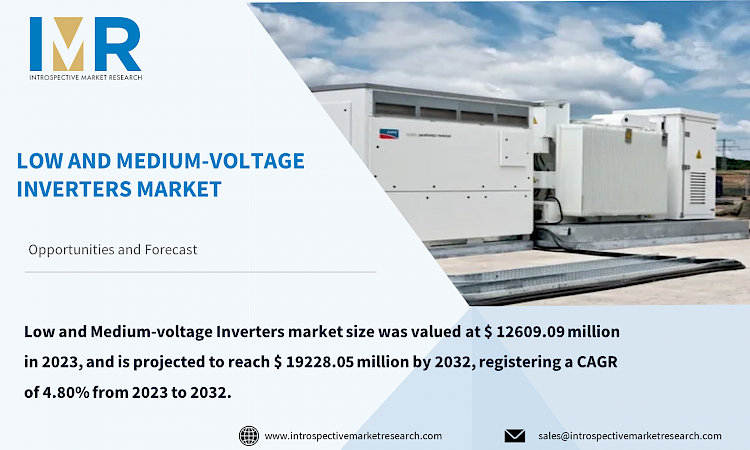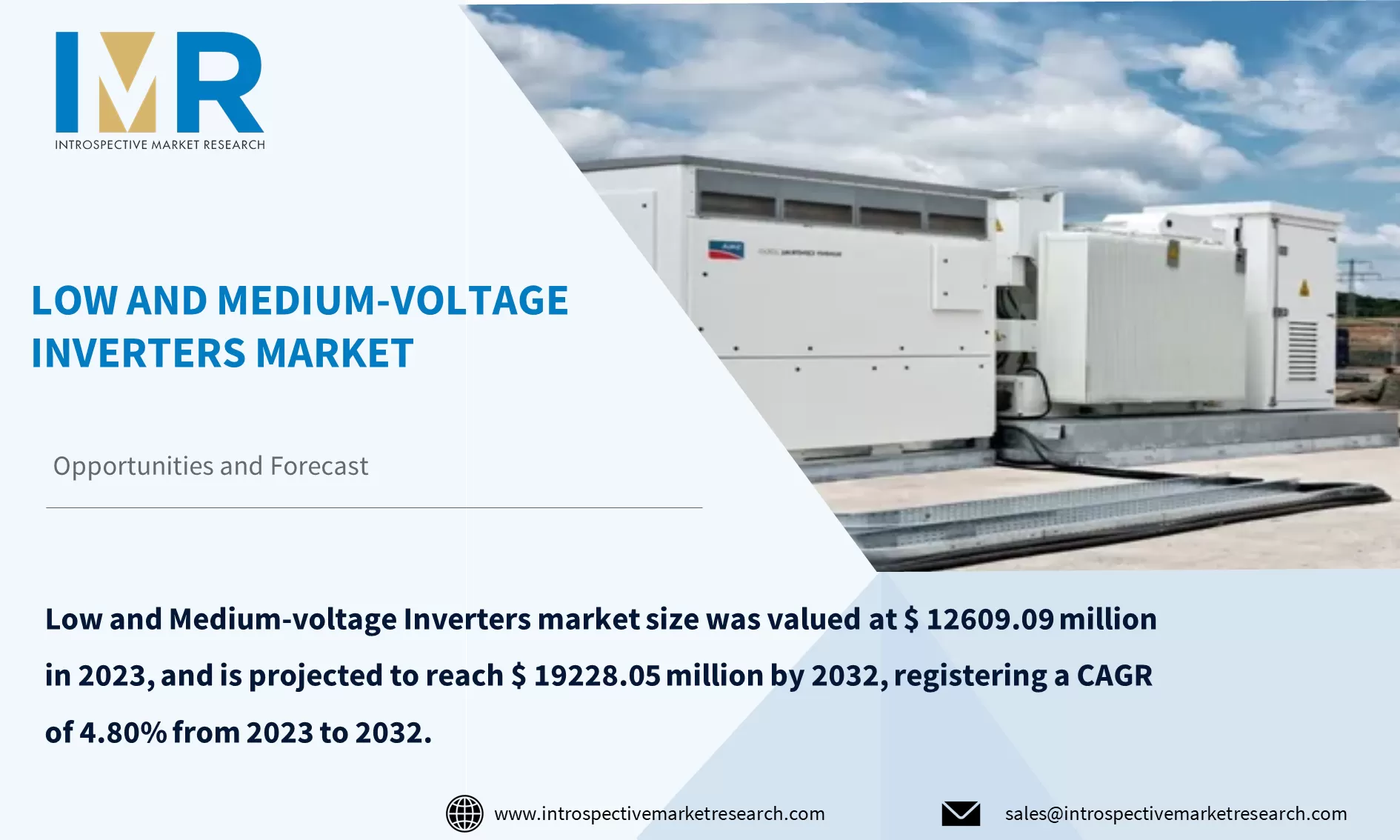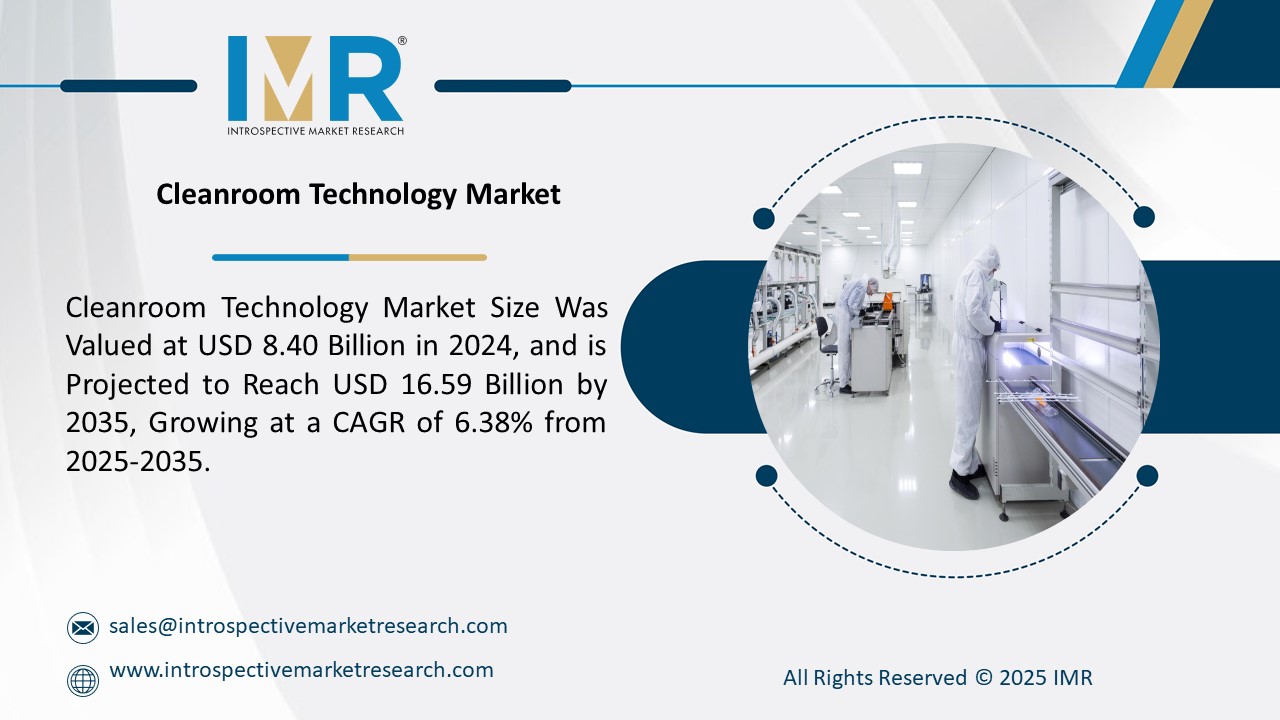
According to a new report published by Introspective Market Research, titled, ?Low and Medium-voltage Inverters Market by Application and Packaging Type: Global Opportunity Analysis and Industry Forecast, 20234?2032,? the global
Low and Medium-voltage Inverters market size was valued at $ 12609.09 million in 2023, and is projected to reach $ 19228.05 million by 2032, registering a CAGR of 4.80% from 2023 to 2032.
Low- and medium-voltage inverters, designed to convert DC power from sources like solar panels or batteries into usable AC power, operate within voltage ranges spanning from several hundred to several thousand volts. These devices offer various advantages, including precise control over voltage and frequency output, efficient power conversion, and compatibility with different loads. By facilitating the seamless integration of renewable energy sources like wind and solar power into existing electrical grids, they promote sustainable energy practices. Furthermore, they ensure reliable functionality and incorporate security features to safeguard hardware and ensure system longevity.
The increasing demand for efficient energy conversion across diverse industries underscores the necessity of low- and medium-voltage inverters. They find applications in industrial settings for machinery and equipment operations, as well as in residential and commercial environments for grid-tied solar systems and backup power solutions. By promoting the adoption of renewable energy technologies, these inverters contribute to enhanced energy efficiency, reduced reliance on fossil fuels, and minimized environmental impact. Moreover, they play a crucial role in maintaining the stability of electrical networks by regulating fluctuations in power generation and consumption, thereby ensuring a consistent and dependable electricity supply.
The rising demand for comfortable indoor environments has driven increased HVAC installations and the use of low- and medium-voltage inverters. These inverters optimize energy efficiency by regulating motor speed, adapting systems to real-time needs, and reducing energy waste. The rise of electric vehicles (EVs) is fueling demand for inverters, vital for battery charging and power conversion. This surge is boosting the low and medium-voltage inverters market, driven by automakers meeting emission regulations and consumer preferences. Inverters are also critical for integrating renewable energy into EV charging infrastructure, advancing charging speed and efficiency. As electrification extends beyond cars to fleets, public transit, and even aviation and maritime sectors, inverters remain essential, shaping the sustainable future of transportation.
Global Low and Medium-voltage Inverters Market, Segmentation
The Low and Medium-voltage Inverters market is segmented based on Product type, Application, and End-Users.
Product Type:
The Product Type segment is further classified into Medium-voltage Inverter (Below 1000V) and Low-voltage Inverter (1000V to 10kV). Among these, the recyclable sub-segment accounted for the highest market share in 2021. The widespread use of recyclable materials such as plastic, glass, metal, and paper has boosted the growth of this market. These materials are recycled by manufacturers to create new packaging, resulting in significant waste reduction. It is now the most widely used and accepted type of Low and Medium-voltage Inverter. Furthermore, the use of recycled plastic is becoming increasingly popular around the world due to the low cost of plastic and its high durability. The low cost of recycled plastic has quickly gained traction in developing countries. As a result of the increasing adoption of recycled plastic across various end-use verticals, this segment has gained global dominance.
Application:
The application segment is further classified into Industrial, Commercial, and Residential. In the global low and medium-voltage inverters market, industrial applications reign supreme, particularly in heavy sectors such as mining, oil and gas, and large-scale manufacturing. Here, medium-voltage inverters are the preferred choice due to their reliability and capacity to handle high voltages. Recent reports and industry insights indicate a growing demand for medium-voltage inverters, especially in emerging economies where industrialization is rapidly advancing. This surge is bolstered by infrastructure projects and the increasing adoption of automation solutions in heavy industries. Despite this, low-voltage inverters maintain their versatility and popularity in commercial buildings, renewable energy systems, and smaller-scale industrial operations, thanks to their affordability and flexibility. Looking ahead, as industries prioritize resilience, sustainability, and efficiency, both low and medium-voltage inverters will remain indispensable for powering the industrial landscape of the future.
Region:
The Low and Medium-voltage Inverters market in Asia-Pacific is projected to show the fastest growth by 2031. China dominates the low and medium-voltage inverters market due to robust manufacturing capabilities, supported by skilled labor and ample raw materials. Government initiatives promoting renewable energy have spurred demand, particularly in the solar and wind sectors. Chinese firms prioritize innovation, enhancing product performance and reliability, enabling them to lead globally. This dominance stems from manufacturing strength, government backing, and technological advancement.
Some of The Leading/Active Market Players Are-
- Rockwell Automation (U.S.)
- General Electric Company (United States)
- Parker Hannifin Corporation (U.S.)
- Emerson Electric Co (U.S.)
- SMA Solar Technology AG (Germany)
- Siemens AG (Germany)
- Schneider Electric (France)
- Nidec ASI (Italy)
- Bonfiglioli Riduttori (Italy)
- Ingeteam (Spain) and Other Active Players
Key Industry Developments
- In February 2024, ABB acquired SEAM Group, a provider of energized asset management services, to enhance its Electrification Service offering. This brought expertise in predictive maintenance, electrical safety, and asset management advisory services. The deal, subject to regulatory approval, was expected to be finalized in Q3 2024, with undisclosed financial terms.
- In October 2023, the first-ever medium-voltage photovoltaic string inverter was introduced by the Fraunhofer Institute for Solar Energy Systems (ISE) under the name "MS-LeiKra." This creative project showcased possible advantages like cost and resource savings for passive components and cables, as well as the technical viability of feeding power into the medium-voltage grid.
Key Findings of the Study
- Industrial Applications held the largest share of 42.25% in 2023
- Asia-Pacific emerges as a key growth region, fueled by government regulations and initiatives promoting sustainable practices.
- Notable developments include ABB's acquisition of SEAM Group to enhance electrification services and the introduction of the first medium-voltage photovoltaic string inverter by Fraunhofer Institute, showcasing advancements in power conversion technology and grid integration of renewable energy sources.





